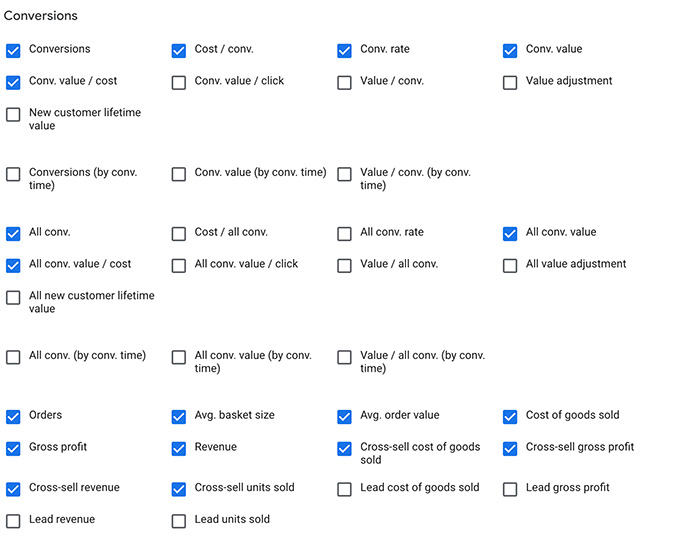What does reporting conversions with shopping cart data?
When you Google Search- and Shopping (Performance Max) ads runs, you can measure the number of transactions as well as the sales and profits generated by the campaigns. All this data is imputed down to the product level, and conversions on different devices are also taken into account. You can measure this with CwCD reporting, which stands short for Conversion with Cart Data.
If you are already using Google Ads conversion tracking, you can set up that cart data. Not using Google Ads Conversion Tracking yet? If so, it's best to set it up.
Why your Conversions with Cart Data Reporting Should start using
- With Cart Data available in Google Ads, you can get a much better overview of the revenue generated and profitability of your Search and Shopping campaigns. This allows you to optimize them for higher gross profits. The measurement is clear and accurate.
- You can get insight into a very detailed report on cart size and average order value.
- You can also understand detailed reporting on items sold.
- Columns are available at both the campaign and product levels.
- There is also an option to view this data with dimensions such as device or geographic location to analyze how each affects other metrics.
The Metrics that make cart data insightful:
- Orders
- Sales generated from ad clicks
- Average size store madness
- Sum of items in basket
- Average order value
- Total revenue from ad clicks / the number of sales (orders) generated from ad clicks.
- Cost Of Goods Sold.
- Total operating expenses allocated to an item
- Revenue
- Total revenue from transactions attributed to ad clicks. Sum price of items in cart generated from ad clicks
- Gross Profit
- Gross profit = Income - Expenses
You can see even more information in the Report Editor. There you can analyze items purchased through Google Shopping campaigns with the following, more in-depth metrics: Units Sold, Product Revenue, Product Gross Profit, Product Average Cost Of Goods Sold.

Only website conversions can be considered & the conversions must use Google's global site tag or Google Tag Manager, so you must have those set up to track them. To get additional reporting on gross profit, you must include the [cost_of_goods_sold] (COGS) attribute in your Merchant Center product feed and provide a value for it.
Why is the use of the COGS in reporting important?
The Cost of Goods Sold attribute is optional for all products. However, you should definitely include it in your product feed when reporting information about products purchased (and using the global site tag).
Purchased product data is used to calculate an estimated gross profit from your sold items. Gross profit is the difference between the revenue you generated and the cost of goods sold (Cost Of Goods Sold) you spent.
- Gross profit = Revenue - Cost of goods sold
It's worth emphasizing that the cost of goods sold data you share with Google is purely for reporting purposes and does not necessarily need to be 100% accurate. What you need to do is put a rough estimate of your actual cost of goods sold in order. This way, you will get an indication of how much profit you have made through conversions and it will help you decide if you need to optimize your campaign more. If your Cost Of Goods Sold varies for a particular item, it is best that you give an average.
Conclusion
Reporting Conversions with Cart Data has been around for some time, because we all know that it is important to have a data-driven approach in any business. By providing data on the cost of goods sold in your product feed, you can report particularly important gross profit information. Which can help make the best possible business decisions in the future.
We are currently the only Google Premier Partner agency in Limburg. So if you still have questions or are convinced that a branded campaign in Google Ads makes sense, don't hesitate to contact us, we don't bite 😉.




